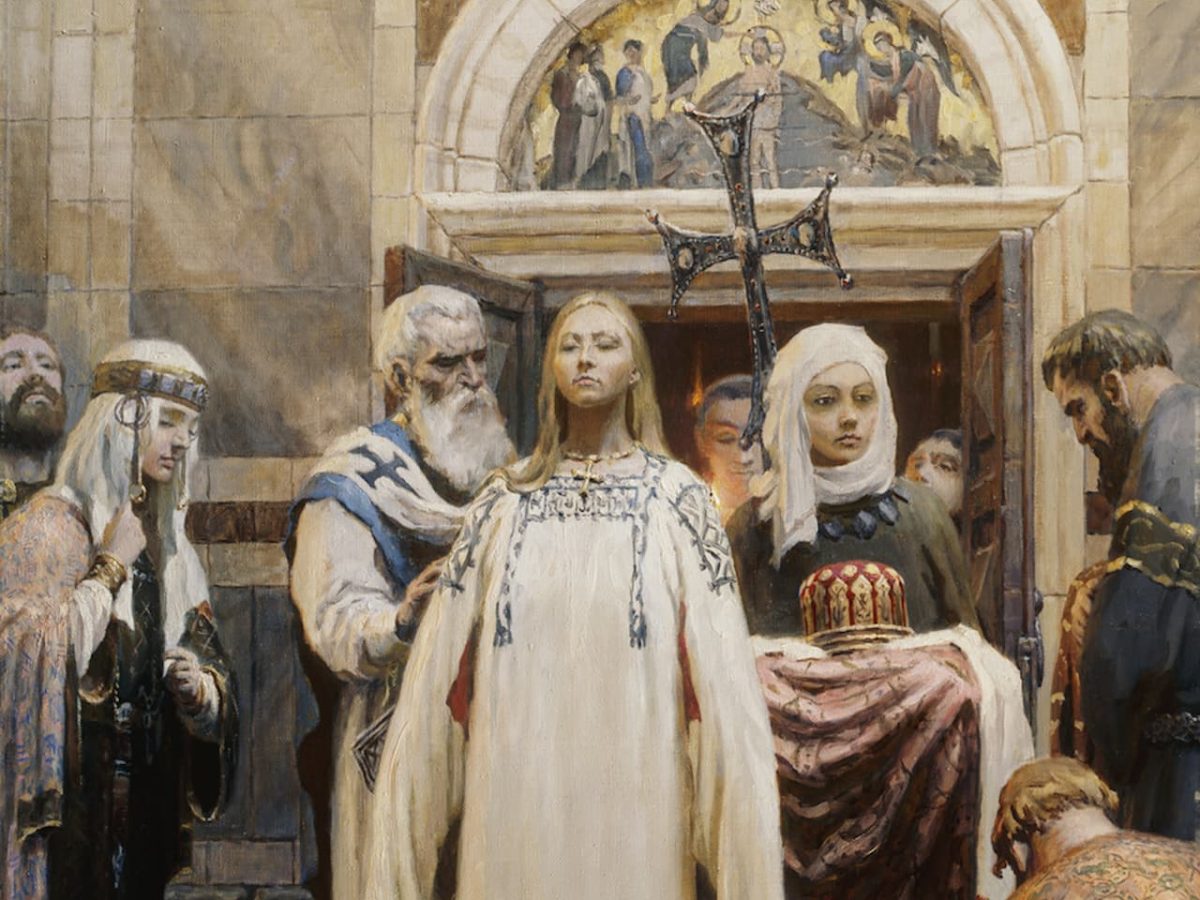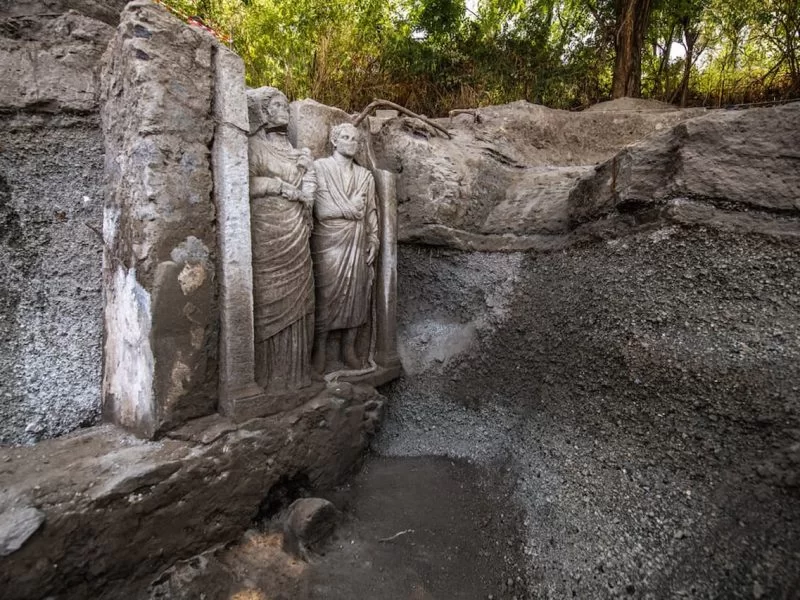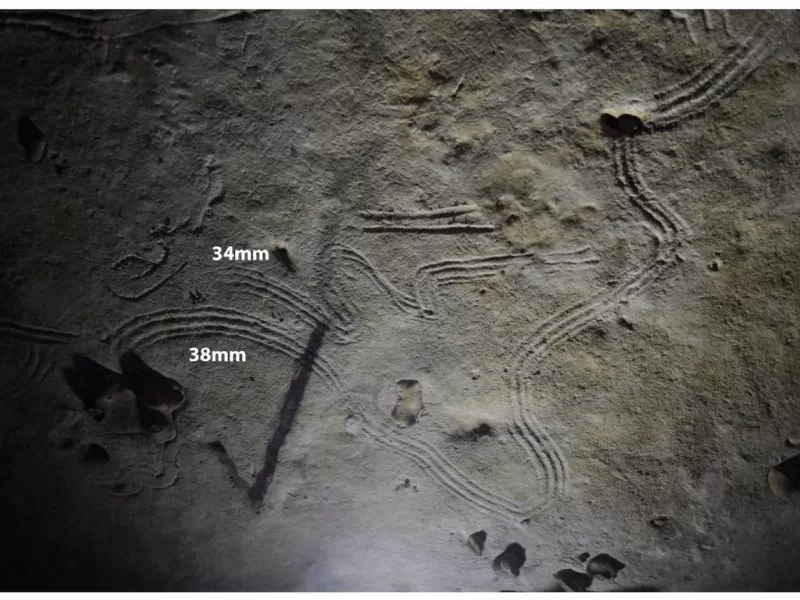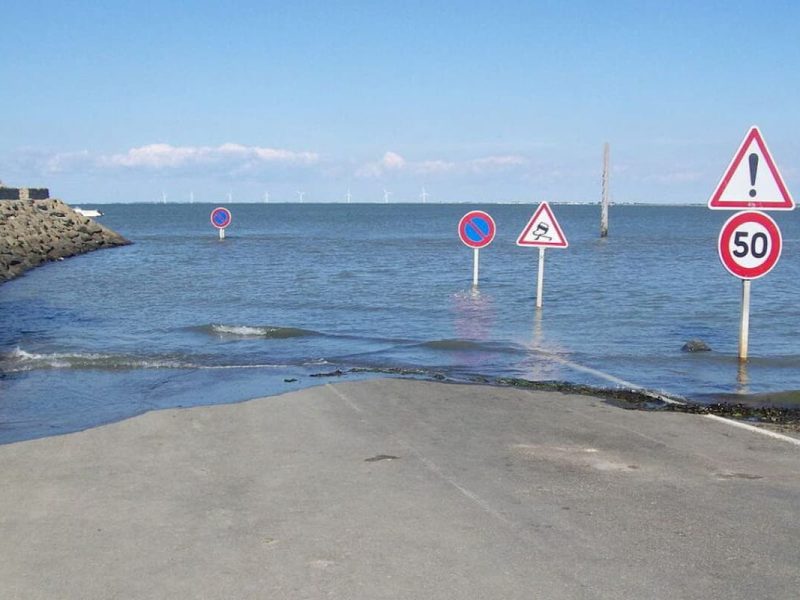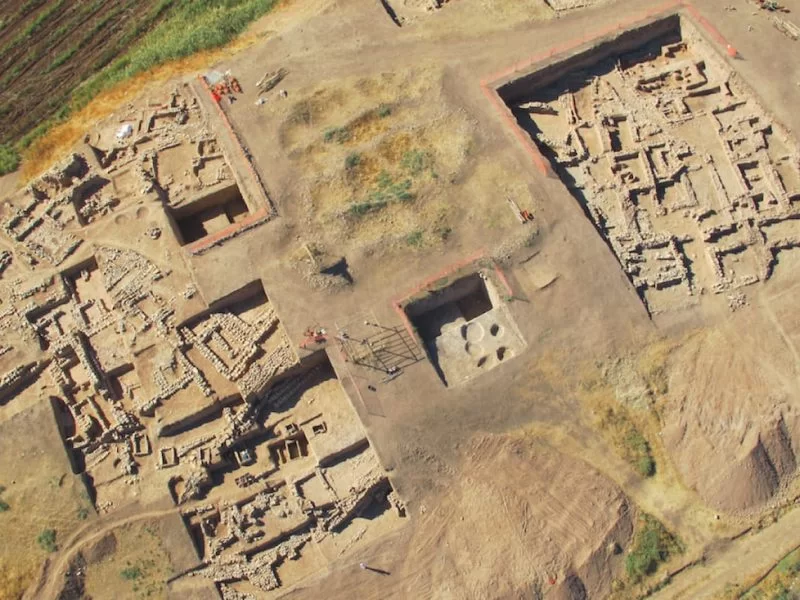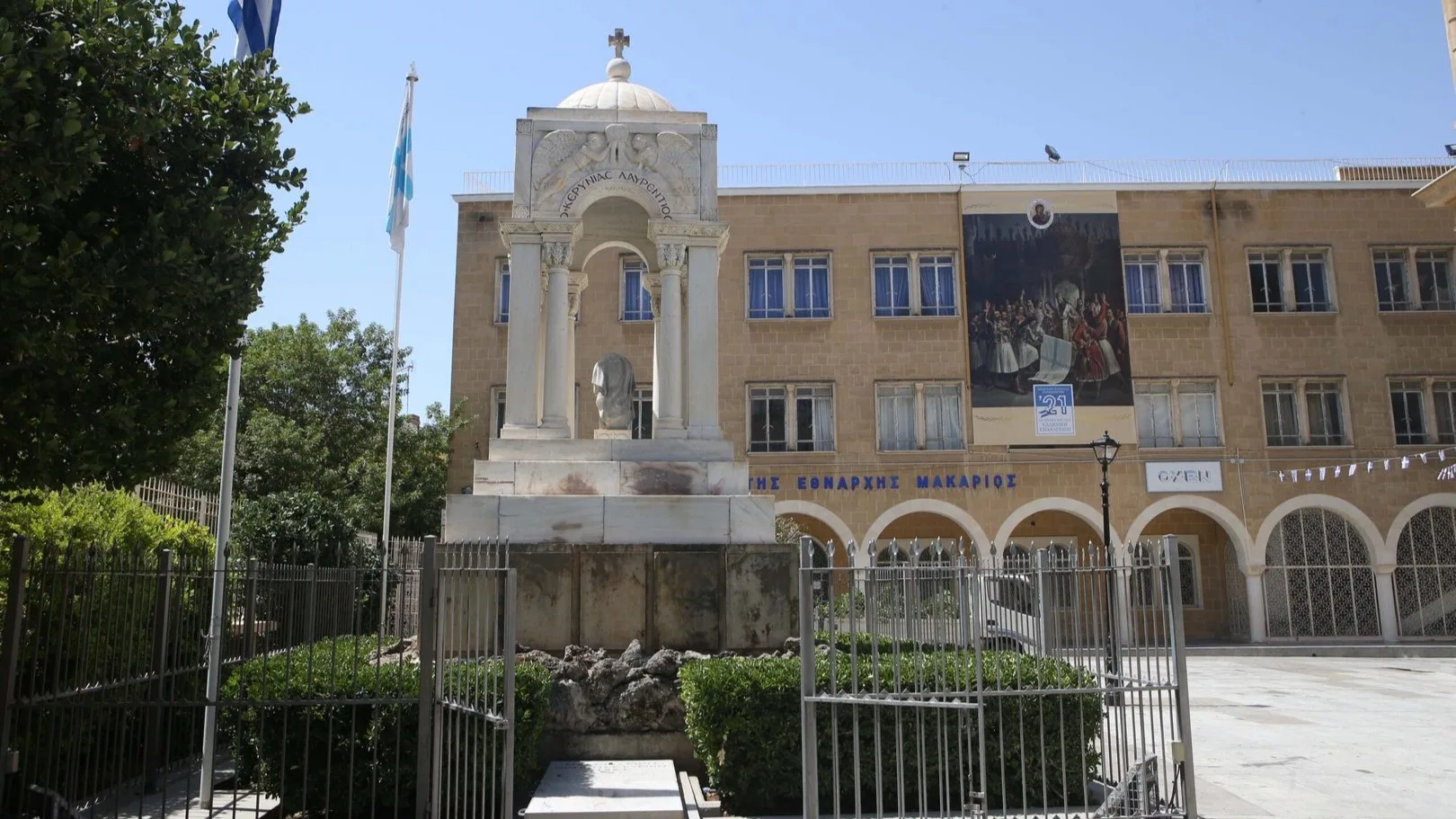Excavations in the ancient city of Leucas have brought to light the first theater discovered in the Ionian Islands. This majestic monument, situated in a privileged position, dominates the landscape of the ancient city and offers an exceptional testimony to the cultural and architectural splendor of the era.
Founded in the late 7th century BCE by the Corinthians, ancient Leucas became a prosperous city-state, favored by its location along maritime routes connecting the northern and western Mediterranean. Its port played a key role in trade and the region’s economic development, enabling the accumulation of wealth and the flourishing of cultural life.
Over the past decades, excavations carried out by the Ephorate of Antiquities of Aetolia-Acarnania and Leucas have revealed significant archaeological remains, including sections of the city walls, urban remains, necropolises, and port structures. However, until recently, the city’s theater had remained forgotten, concealed by the passage of time and the expansion of olive groves in the area.
The rediscovery of the theater began in 1997 when geophysical studies and surface surveys identified its location on the northeastern slope of Koulmos Hill, about three kilometers south of the present-day city of Leucas. However, systematic exploration could only begin in 2015, under the direction of Dr. Olympia Vikatos, with the collaboration of the then-mayor of Leucas and the organization DÍAZOMA. Thanks to these efforts, the first trenches revealed seating rows, the orchestra, and the retaining wall of the stage.
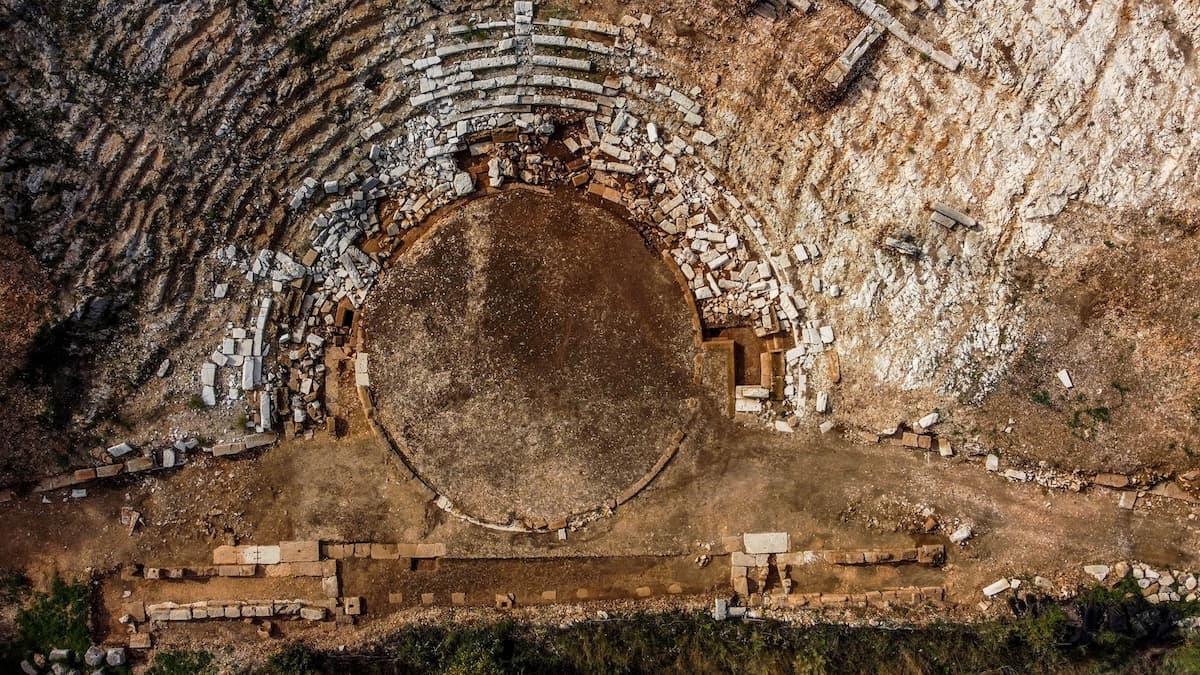
The excavation project, funded by the Region of the Ionian Islands and the Municipality of Leucas with an investment of 200,000 euros, commenced in 2017. Over the next five years, the archaeological intervention uncovered most of the theater’s structure, revealing a large enclosure with remarkable architectural features.
The theater of Leucas, oriented northeast-southwest, is divided into 12 sectors separated by 13 access staircases. In its original configuration, it had 21 rows of seats in the cavea, accommodating 3,500 spectators, while with the expansion of the epitheater, it is estimated to have held up to 10,000 people.
One of the most notable elements is the orchestra, designed as a perfect circle with a diameter of 16.65 meters, surrounded by a three-tiered limestone peristyle decorated with moldings and ornamental bands. Additionally, parts of three finely carved stone thrones have been recovered, featuring depictions of lions, dolphins, and mythological symbols, believed to have belonged to high-ranking dignitaries or priests of the city.
Although the stage has been damaged over time and by the looting of materials for later constructions, it still preserves the bases of its columns and remains of its Ionic façade, composed of 16 semi-columns. Two lateral ramps, each nine meters long, led to the stage where actors performed before the audience.
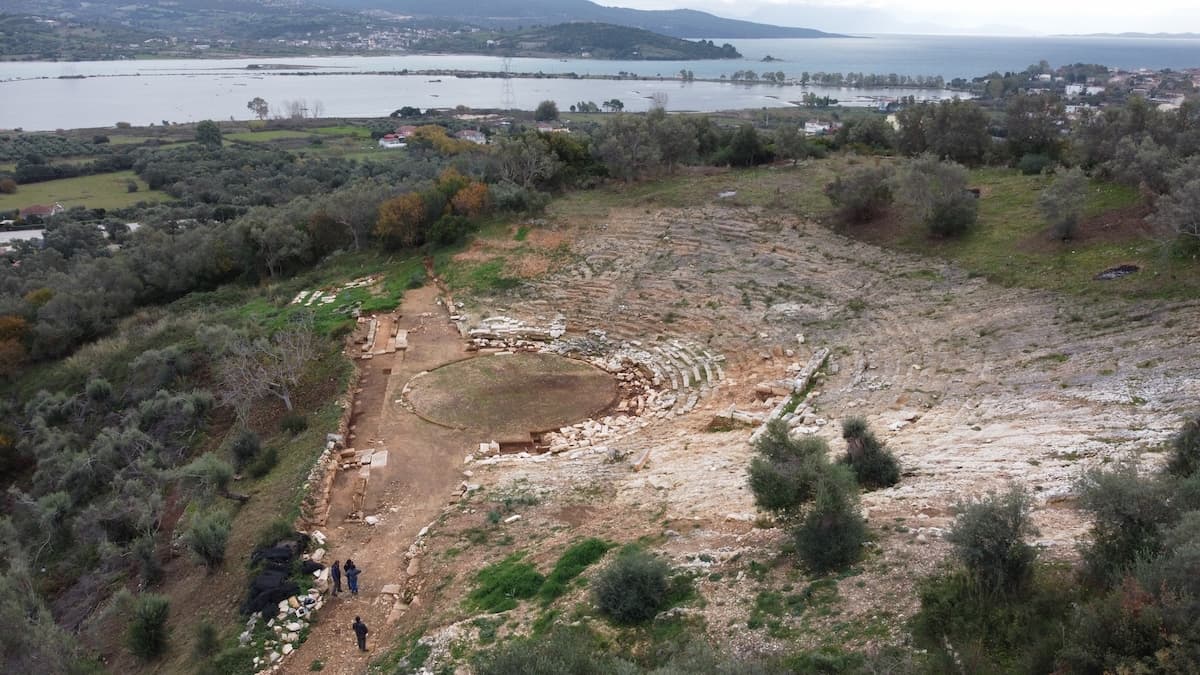
Archaeological evidence suggests that construction of the theater began in the 4th century BCE, coinciding with Leucas’s period of greatest economic and cultural splendor. However, the building underwent modifications in later periods, adapting to new architectural and scenic trends.
With the founding of Nicopolis by Emperor Octavian Augustus in 31 BCE, much of Leucas’s population was forcibly relocated to the new city, leading to the gradual decline of the settlement. In later periods, the theater was abandoned, and its materials were repurposed for medieval and modern constructions.
Despite the ravages of time and human intervention, the theater of Leucas remains the most impressive monument discovered in the ancient city. Currently, restoration studies are underway to preserve and enhance the site, with the goal of integrating it into the region’s archaeological tourism circuit.
The Greek Ministry of Culture has launched an expropriation plan to complete the excavation in unexplored areas, while the theater’s restoration has been included in European funding programs. With these initiatives, this exceptional testimony to Greek theatrical architecture is expected to regain its splendor and become a landmark for historical research and cultural tourism in the Ionian Islands.
Discover more from LBV Magazine English Edition
Subscribe to get the latest posts sent to your email.


